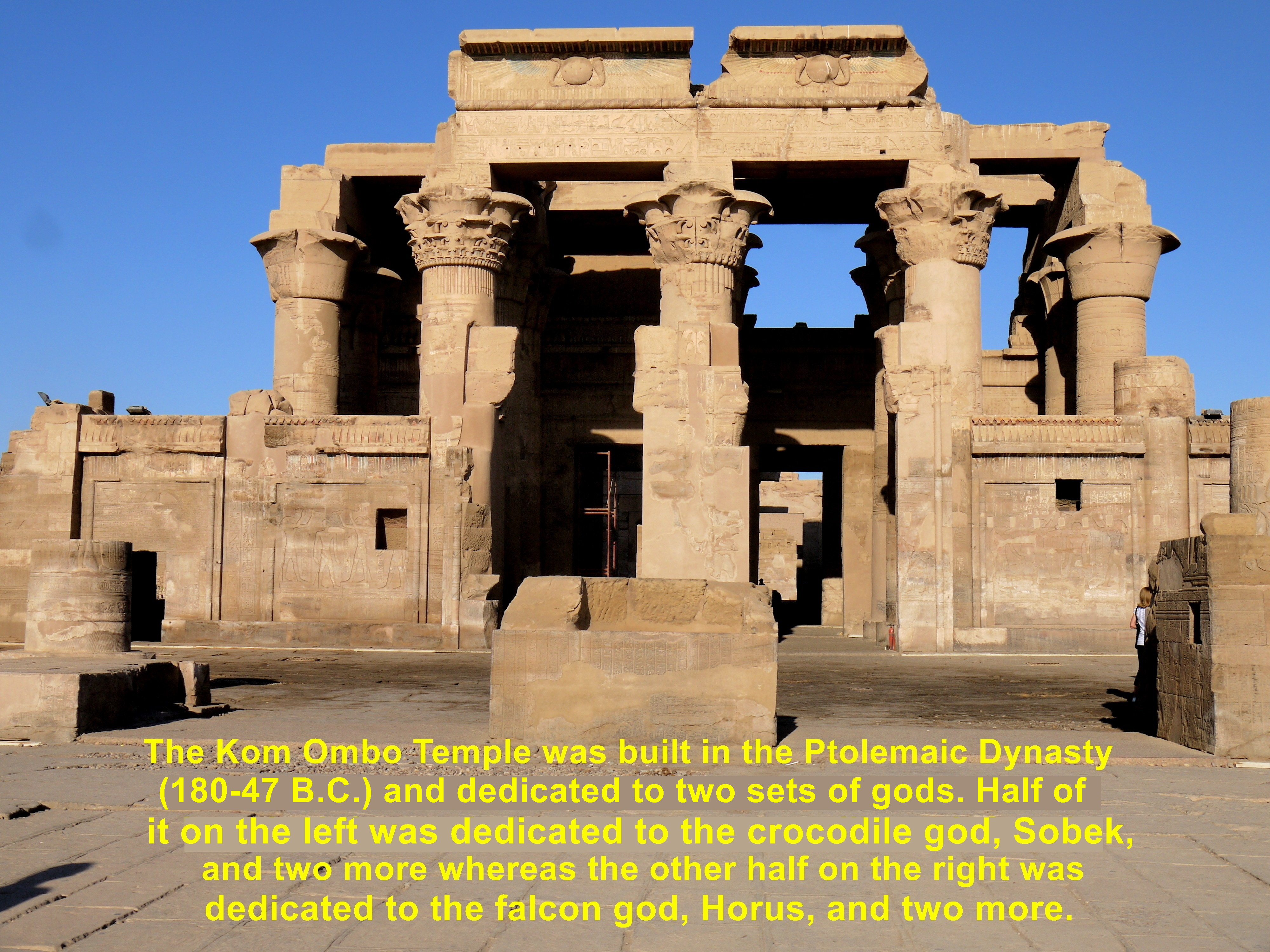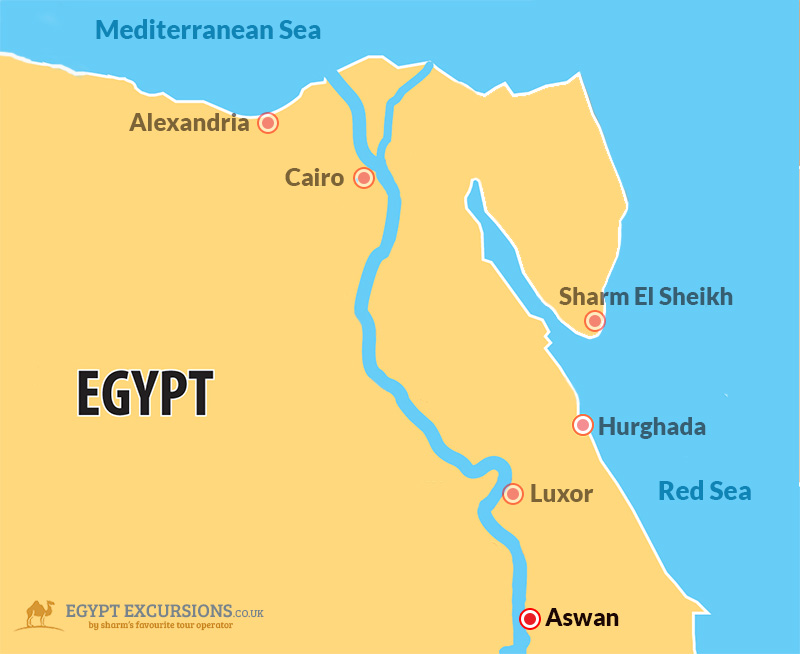
This undated photo released by the Egyptian Ministry of Antiquities, shows the latest discovery of a statue with a lion's body and a human head, in the Temple of Kom Ombo
in Aswan, Egypt (Egyptian Ministry of Antiquities)

Posted on 09/17/2018 9:42:47 AM PDT by ETL
Archaeologists have discovered a stunning sphinx statue at an ancient temple in southern Egypt.
The sandstone statue was discovered during a project to reduce groundwater at Kom Ombo temple in Aswan.
The statue likely dates back to the Ptolemaic period, between 305 B.C. and 30 B.C., according to Dr. Mostafa Waziri, general secretary of Egypt’s Supreme Council of Antiquities.
In a Facebook post, Waziri explained that the statue was found in the southeastern side of the temple, where two sandstone reliefs of King Ptolemy V were discovered two months ago.
Sphinx statues, which have a lion’s body and a human head, typically depict a king and are often found guarding the entrances to ancient Egyptian temples.
General Director of Aswan Antiquities Abdel Moneim Saeed said that more research will be done on the newly discovered sphinx.
The sphinx is the latest fascinating ancient find in Egypt. Another sphinx was recently uncovered during roadwork in the city of Luxor, 112 miles north of Aswan.
While the famous Great Sphinx of Giza on the outskirts of Cairo is the best known, there are a number of smaller sphinx statues in Luxor.
In another project, archaeologists recently unlocked the secrets of a mysterious ancient ‘cursed’ black granite sarcophagus.
The massive coffin, which was excavated in the city of Alexandria, was found to contain three skeletons and gold sheets with the remains. The tomb also dates back to the Ptolemaic era. ..."
(Excerpt) Read more at foxnews.com ...


The sandstone statue was discovered during a project to reduce groundwater at Kom Ombo temple in Aswan."

*ping*
The undated photo is probably 30 years old.

Finding that stunning sphinx was a cunning stunt.
This settle the debate over what the Sphinx at Giza looked like when new, yes?
No, the Sphinx was created at least 2,000 yrs ago before this find (which isn’t much of a find)and maybe more, much more.
Egyptian archaeologists find sandstone sphinx in temple at Aswan
Reuters | 16 Sep 2018 | Staff
Posted on 09/16/2018 4:57:15 PM PDT by blueplum
http://www.freerepublic.com/focus/chat/3688057/posts
This settle the debate over what the Sphinx at Giza looked like when new, yes?
No. The head of the Great Sphinx has clearly been recarved, as it shows very little wind erosion, but protruded above the sands that covered the body for most of the past 4500 years. The facial characteristics of the current face of the Great Sphinx appear to be those of the 25th Dynasty (the Nubian dynasty), and the Dream Stele (from the 18th) documents that the Sphinx had been covered and basically unknown to the Egyptians of that time. Herodotus saw a lot of stuff while in Egypt, and wrote about it, yet doesn't mention the Sphinx.
Robert Schoch's suggestion is that the original head was that of Mehit.
Thanks fieldmarshaldj. Ping to this one because of the photos, I hadn't pinged the earlier topic because I didn't read it carefully and thought it had already been posted and pinged (that was a different sphinx).
https://atlantisrisingmagazine.com/article/the-sphinx-breaks-its-silence/
btw, I used to rely on the cached versions of search hits, because the venerable old CPU/OS oftens chokes on https links. Now more often than not, Google claims the cache which is right in the resulting links doesn’t exist. Must be their tireless hunt to eliminate dissent.
The ‘riddle of the Sphinx’ used to be who was the creator/image and when.
Now that there are competing Sphinxi, does the riddle shift to what part they played in Ancient Egyptian culture or religion.
The riddle of the Sphinx is found in Sophocles. :^)
from the forbidding depths of the hard drive:
[snip] Minerva July-Aug 2000 had article containing abstracts of papers given at the Egyptian conference back in late March/early April. Check out this:The so-called Dream Stela of Tuthmosis IV does not mention that the Great Sphinx was created by Khafre (Chephren), but the older stela of Amenhotep II mentions both Khufu and Khafre. It is located within the quarries of Khufu. Since the causeway of Khafre runs slightly to the southeast, rather than straight to the east, and since his valley temple lies beyond the axis of his pyramid complex, also toward the southeast, it is suggested that it was to avoid something important that already stood there -- the Great Sphinx. The features also point to Khufu -- the square face and broad chin, the pleated nemes without a band, the wide open eyes and large ears, and the fact the statue was beardless in the Old Kingdom. -- Rainer Stadelmann, "The Great Sphinx of Giza -- A Creation of Khufu/Cheops"Another abstract on the same page (42) pertains to some of the tomb items from Tutankhamun -- these items had been made for Smenkhkare, Tut's immediate predecessor, which is difficult to explain to Christine Mahdi et al, who claim that Smenkhkare was none other than Nefertiti, on the flimsiest basis possible. Sorry, no website. In fact, the only magazine-related email address I found was on Compuserve. [/snip]
Disclaimer: Opinions posted on Free Republic are those of the individual posters and do not necessarily represent the opinion of Free Republic or its management. All materials posted herein are protected by copyright law and the exemption for fair use of copyrighted works.